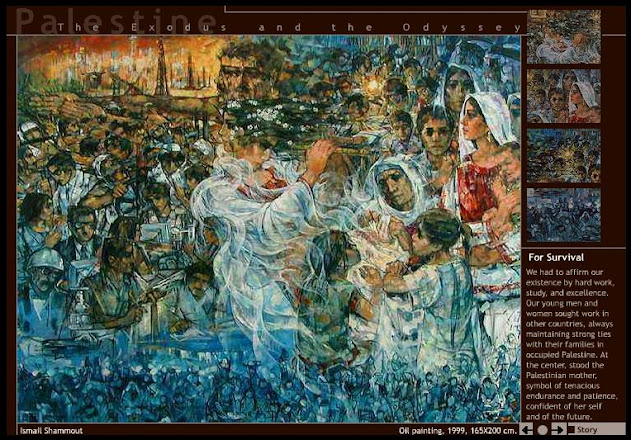 |
| Ismail Shammout Self Portrait 1985 |
Ismail Shammout (1931- 2006 )was a Palestinian artist and art historian. Born in Lydda,
he and his family were expelled from the city on July 12, 1948 by Israeli
forces. His family settled in a refugee camp in Gaza. Shammout enrolled in the
College of Fine Arts Cairo in 1950, returning to Gaza in 1953. That year
Shammout held, with his brother Jamil, the first exhibition by a contemporary
Palestinian artist in Palestine.
 |
| Ismail Shammout's 1953 'Where to?" |
The exhibition included Where to? (1953), a sobering oil-on-canvas depiction of a family in exodus. A year later, Shammout was part of the Palestine Exhibition of 1954 in Cairo, inaugurated by president Gamal Abdel Nasser. Shammout incorporated Palestinian traditions in his realist painting, which commented on the plight of Palestinians since 1948. In 1954, he enrolled at the Accademia di Belle Arti in Rome.
Shammout moved to Beirut in 1956, where he married fellow artist Tamam al-Alkal. Shammout became the Director of Arts and National Culture for the Palestine Liberation Organization (PLO) in 1965. In 1983, following the Israeli attack against the PLO in Lebanon, Shammout moved from Beirut to Kuwait, then Germany, and finally to Jordan.
 |
| The Land and Love by Ismail Shammout |












